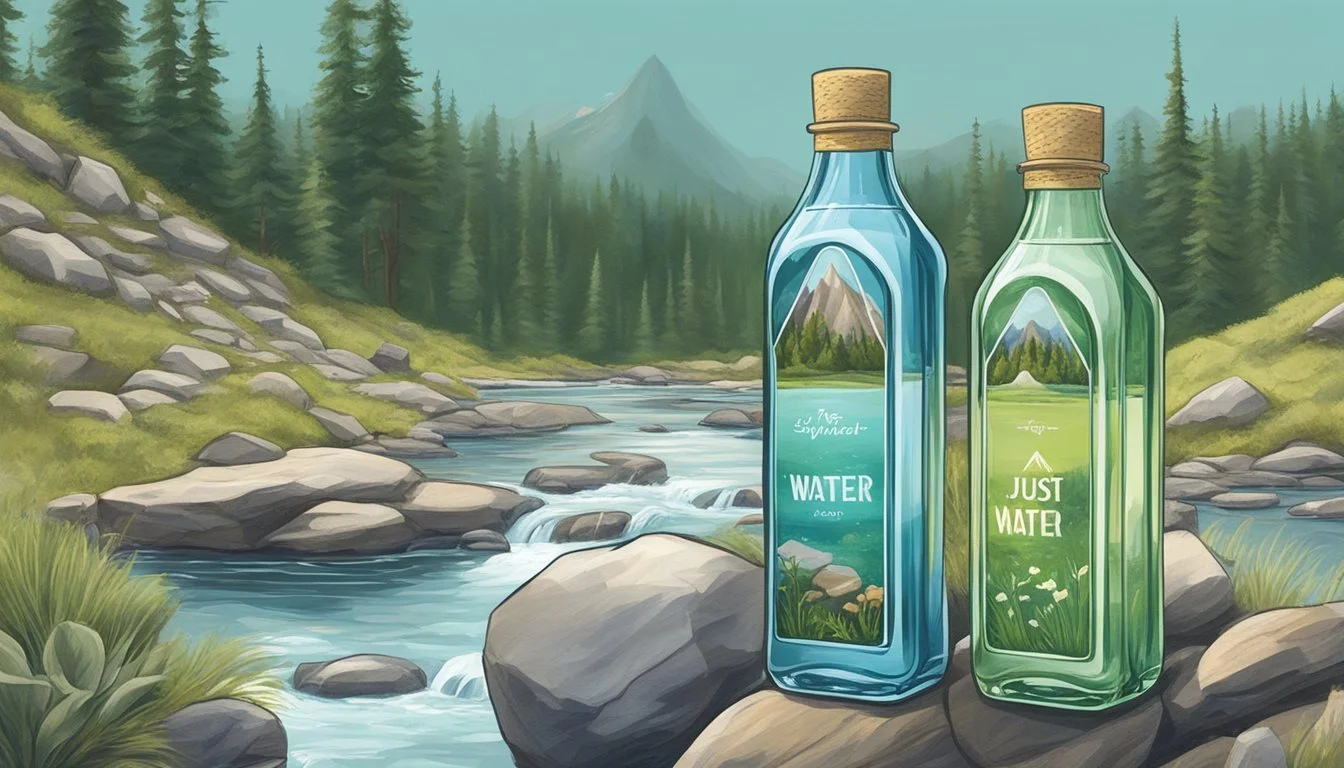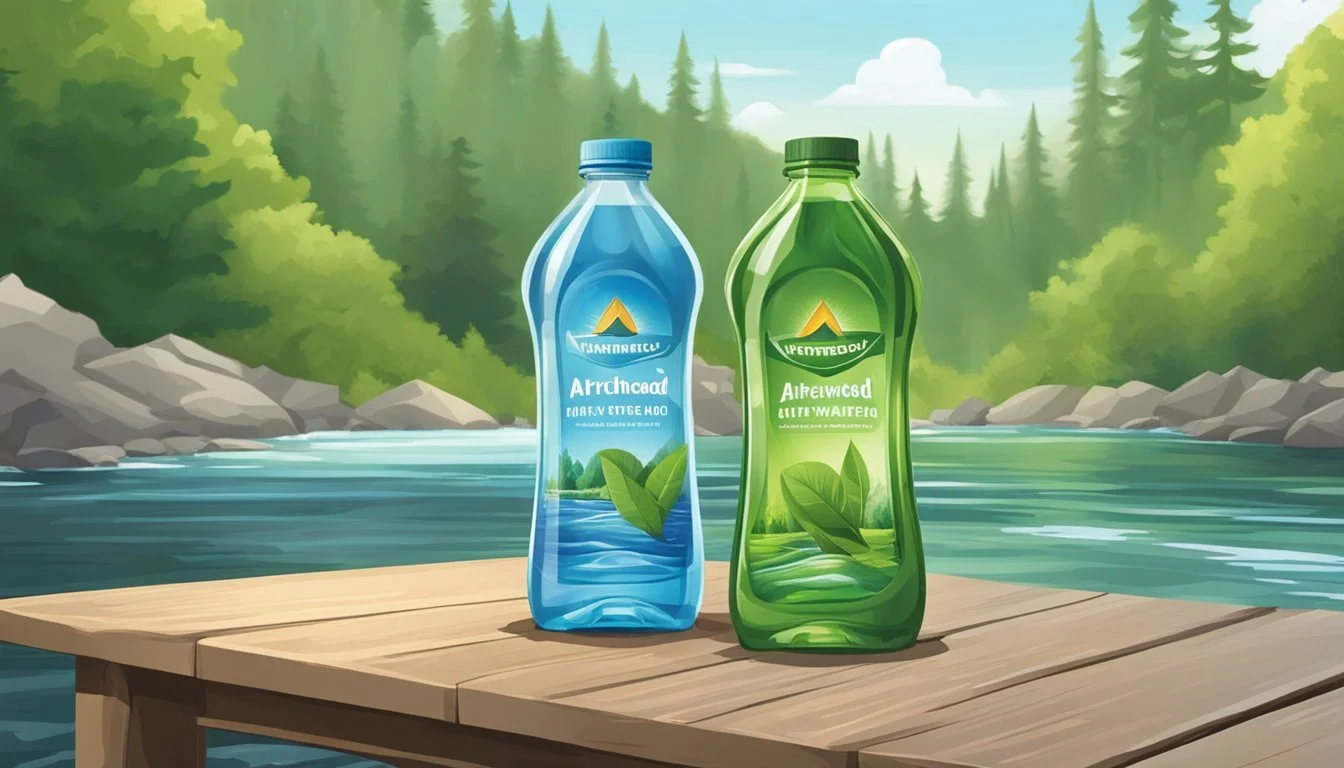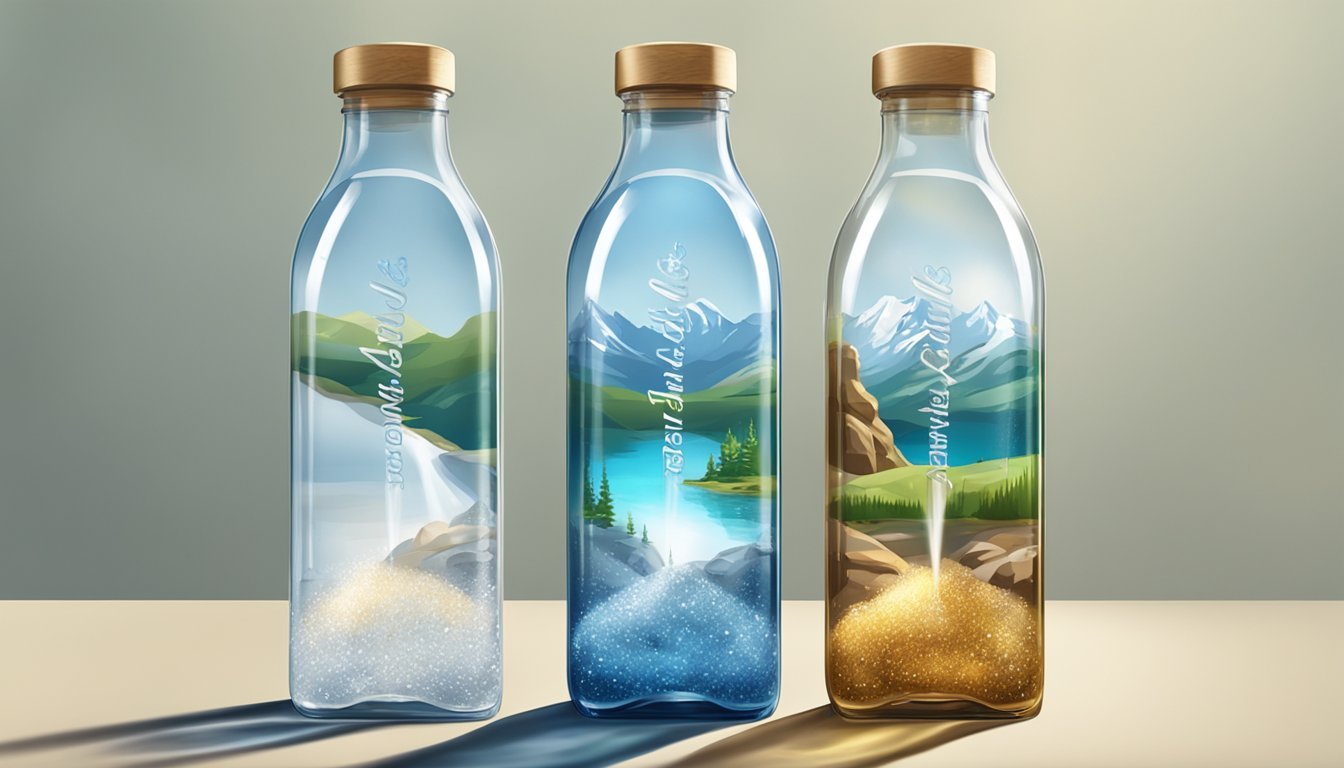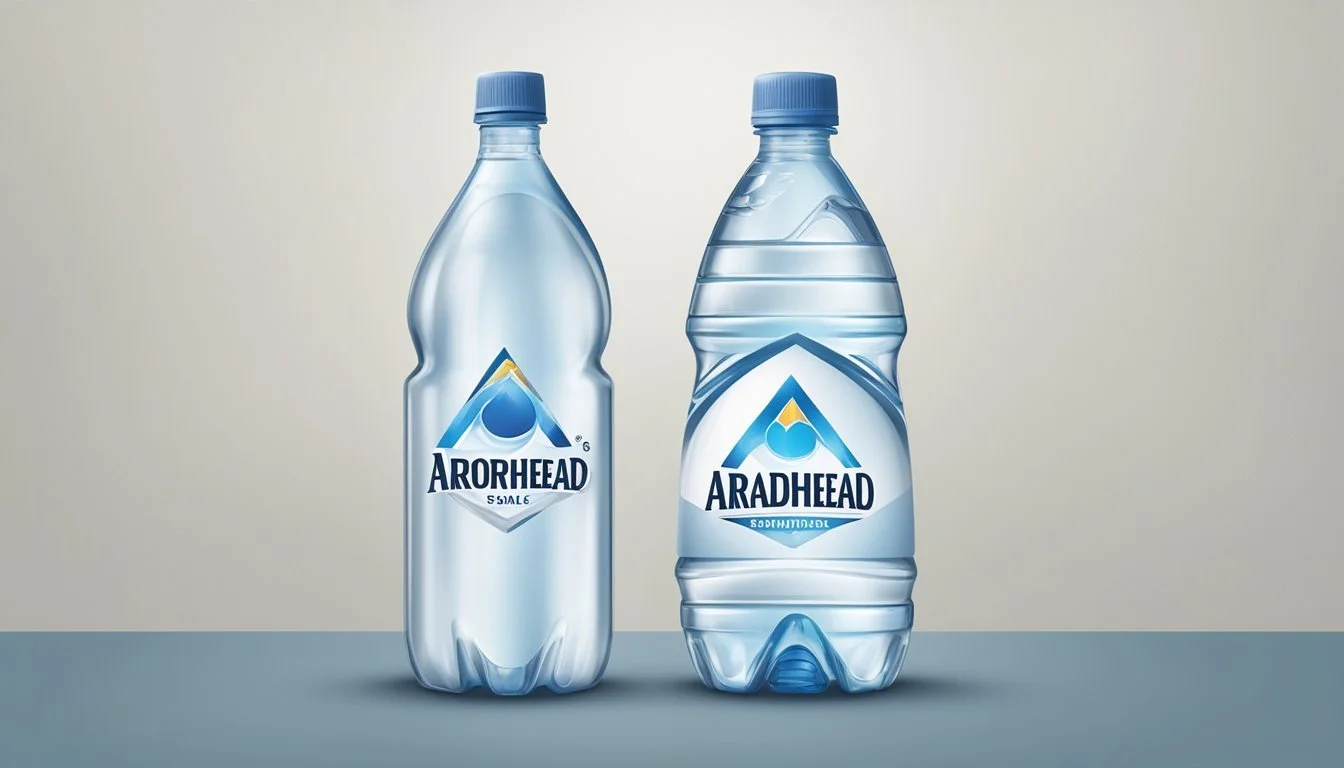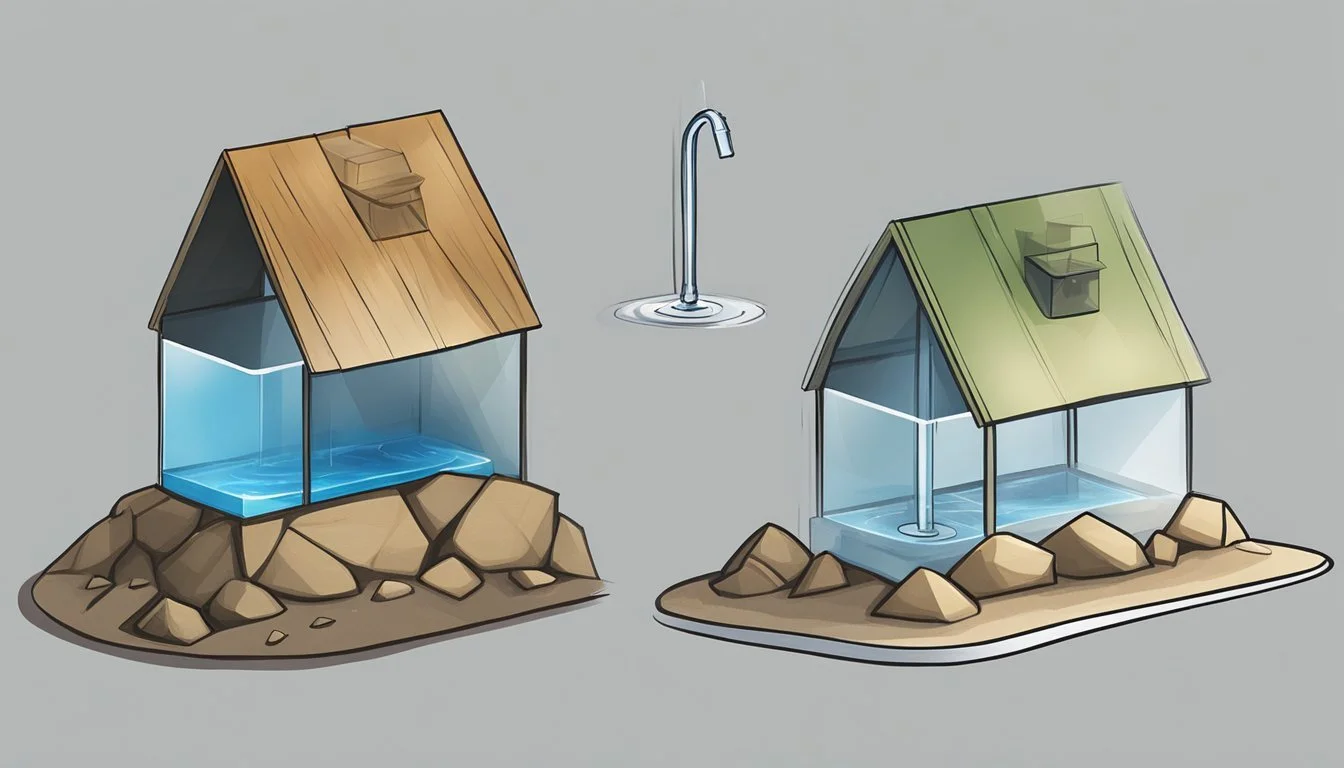Arrowhead vs. Just Water
A Comprehensive Comparison of Bottled Water Brands
In the world of bottled water, consumers are flooded with a variety of brands, each claiming superiority over others. Among these, Arrowhead and Just Water stand out—but for different reasons. Arrowhead, a brand often associated with its mountain spring sources across the western United States and Canada, offers a taste that is familiar to many. Despite its established name and natural sourcing, some find Arrowhead's flavor lacks the distinction one might expect from spring water.
Just Water, on the other hand, touts its eco-friendliness with packaging made from renewable resources and a commitment to ethical sourcing. This brand differentiates itself through its unique business model focused on sustainability and community impact, as well as its water's crisp taste. With environmental concerns becoming more prevalent, Just Water's approach to bottled water has attracted a dedicated consumer base.
As two distinct choices in the bottled water market, Arrowhead and Just Water cater to different priorities: one, a well-known brand offering a classic choice, and the other, a newer entrant focused on sustainability and ethical practices. Consumers must weigh these factors when deciding which bottled water meets their preferences for both taste and values.
Company Profiles
In exploring the bottled water industry, specifically Arrowhead and Just Water, it's essential to understand the background and operations of each company. Consumers may prioritize different aspects of bottled water, such as taste, source, environmental impact, and company ethics.
Arrowhead Water Overview
Arrowhead® Brand Mountain Spring Water has been sourced from mountain springs in California since its establishment in the late 19th century. The brand is a subsidiary of Nestlé Waters North America Inc., one of the largest bottled water companies in the world. Arrowhead touts its water as 100% Mountain Spring Water, which is predominantly sourced from several springs located in the mountains of Western United States. However, the company faced controversy over water sourcing practices and the environmental impact of drawing groundwater.
Source: Mountain springs in California
Owner: Nestlé Waters North America Inc.
Controversy: Environmental concerns, water rights issues
Just Water Overview
Just Water is a relatively newer player in the bottled water market, founded in 2015. The company prides itself on its eco-friendly approach to packaging and sourcing. Just Water bottles are made of 82% renewable resources, emphasizing reduced plastic usage. The water itself is 100% spring water, sourced from the Adirondack Mountains in upstate New York. The brand is partly owned by actor Jaden Smith, and places a significant emphasis on sustainability and youth empowerment.
Source: Adirondack Mountains, New York
Packaging: Made of 82% renewable resources
Ethos: Sustainability, corporate responsibility
Both Arrowhead and Just Water focus on providing natural spring water, but each company has a unique approach to this offering, reflecting their respective priorities and values.
Environmental Impact and Sustainability
In assessing the environmental ramifications of Arrowhead and Just Water, one must consider the bottling processes and the sustainability measures each company enacts to protect ecosystems.
Bottling Process and Plastic Use
Arrowhead employs a process that primarily involves plastic bottles, raising concerns over environmental sustainability. Despite the company's recycling initiatives, plastic production and disposal remain problematic due to potential pollution and the long-term degradation process of plastic. Research studies have found the presence of contaminants such as bacteria and chemicals in the brand's water, suggesting the need for improved quality control measures.
Just Water, in contrast, touts its use of a reusable bottle design and its commitment to using materials that have a lower environmental footprint. Just Water's bottles are made from paper from FSC-certified forests, predominantly in British Columbia, and have plant-based caps. These design choices reflect a higher degree of sustainability and reduced impact on ecosystems compared to conventional plastic bottling.
Source Protection and Ecosystem Impact
Arrowhead sources water from the San Bernardino National Forest, which has led to legal challenges concerning the impact on local ecosystems. Drawing water from natural springs can potentially affect the surrounding environment, depending on the volume extracted and the sustainability of such practices.
In comparison, Just Water sources its water from Colorado, engaging in ethical water stewardship programs designed to ensure minimal impact on the surrounding ecosystem. Just Water's approach aligns with the broader trend of seeking sustainable water sourcing options that do not deplete or harm natural environments.
Health Implications
When considering the health implications of bottled water brands such as Arrowhead and Just Water, one must examine the purity and safety of the water, as well as the potential contaminants it may contain. These factors are crucial as they determine the impact of the water on consumer health and hydration.
Water Purity and Safety
Arrowhead Water, sourced from springs, must comply with FDA regulations for safety. However, some studies suggest that bottled water can contain impurities. Just Water emphasizes its eco-friendly packaging and sustainable sourcing, but the purity of its product is also expected to meet regulatory requirements. It's important to note that while both brands are subject to safety inspections, bottled water is less regulated than tap water.
Potential Contaminants
Consumers often express concern about contaminants such as PFAS chemicals, heavy metals like lead, arsenic, and mercury. While specific testing results for Just Water are not detailed in this prompt, Arrowhead has faced scrutiny for containing contaminants, including arsenic, which in large amounts can harm health and hydration.
PFAS Chemicals: Can lead to adverse health effects with long-term exposure.
Heavy Metals: These include lead, which can affect the brain; arsenic, a carcinogen; and mercury, which can damage the nervous system.
It's essential that consumers look for independent testing results or quality reports provided by bottled water companies to make informed decisions about the products they choose to consume.
Taste and Water Quality
In evaluating bottled water, especially Arrowhead and Just Water, one must consider the intricacies of mineral content and flavor profiles, along with insights from taste testing guided by water sommeliers.
Mineral Content and Flavor Profiles
Arrowhead water is known for its natural mineral content, which can influence the taste. The minerals found in natural water like Arrowhead are not only crucial for health but also contribute to the overall flavor profile. They source their water from springs, and depending on the specific source, the mineral composition can include calcium, magnesium, and potassium, which can give the water a distinctive, often described as "fresh," taste.
Just Water, on the other hand, puts emphasis on sustainability and its impact on water quality. Their water is touted to have a high pH level, typically around 8, indicating that it is more alkaline. The taste of Just Water is characterized by its smoothness, often attributed to its mineral content, which includes calcium, magnesium, and bicarbonates. These naturally occurring minerals not only enhance the flavor but also promote a clean and crisp finish.
Taste Testing and Water Sommelier Insights
Taste testing conducted by experts such as water sommeliers provides a deeper understanding of the nuances between Arrowhead and Just Water. Water sommeliers specialize in water taste and can detect subtle differences in flavor that might be missed by the average consumer. In blind taste tests:
Arrowhead is often described as having a more robust flavor, which could be due to the natural minerals picked up from its spring sources. Some tasters may perceive this as a more authentic "natural water" taste.
Just Water's higher alkalinity generally leads to a smoother and more neutral palate experience, which can be appealing to those who prefer a more subtle flavor profile.
It is these minute details, noticeable in carefully controlled taste test environments, that can significantly differentiate one brand from another in terms of water quality and taste preference.
Product Range and Availability
When comparing the product range and availability of Arrowhead and Just Water, customers will find that both brands offer a variety of bottled water products and have significant retail presence. Each brand caters to different customer preferences including still water, carbonated water, and in some cases, flavored water.
Varieties of Bottled Water Offered
Arrowhead provides:
Still Water: Sourced from mountain springs, primarily available in the western U.S. and Canada.
Carbonated Water: Available in both unflavored and flavored varieties, infusing bubbles for a different drinking experience.
Just Water offers:
Still Water: Their flagship product is 100% spring water, housed in a plant-based carton.
Flavored Water: Comes in a few organic flavors, providing an alternative to the natural taste of spring water.
Retail Distribution and Accessibility
Both brands have penetrated the retail market significantly, each with its approach to distribution:
Arrowhead: Widely available across the United States, especially in grocery stores and convenience stores within its source region - the western areas of the country.
Just Water: Focused on sustainability, its products are found in a selective range of outlets that align with its brand values, along with mainstream retail markets that include grocery stores and some convenience stores.
Each brand ensures that their bottled water, whether still or carbonated, is accessible to the consumers in various retail environments.
Brand Image and Consumer Perception
In evaluating Arrowhead and Just Water, consumer perception and brand image play critical roles, influenced by both marketing strategies and customer trust.
Marketing Strategies and Ethos
Arrowhead leverages its history and origin to influence its brand image, promoting itself as a provider of mountain spring water. Despite this natural and pure image, some consumers have raised concerns over environmental impact and the presence of contaminants.
On the other hand, Just Water has crafted an ethos centered on sustainability and ethical responsibility. They emphasize their use of a paper-based carton, which they claim reduces carbon emissions by up to 74% compared to traditional plastic bottles. This has resonated with eco-conscious consumers and positioned Just Water as a forward-thinking brand in the bottled water industry.
Customer Reviews and Trust
Customer reviews for Arrowhead reveal a mix of opinions. While some appreciate the taste and accessibility, there have been reports of quality issues, potentially impacting customer trust.
Just Water has garnered positive customer reviews, especially from those who prioritize environmental impact. Their commitment to using renewable resources has strengthened customer trust in the brand, leading to a favorable brand image among a segment of consumers who value sustainability.
Both brands continue to navigate the evolving consumer landscape, where brand image and consumer perception are shaped by a combination of quality, marketing, and the ability to address consumer values and ethical concerns.
Comparative Analysis
In the bottled water market, consumers often weigh the cost against the perceived value when choosing brands. Rankings and recommendations play a pivotal role in these decisions. This analytical comparison between Arrowhead and Just Water will focus on their cost-effectiveness and their standings in bottled water recommendations.
Cost and Value for Money
Arrowhead is generally considered a budget-friendly option. A pack of Arrowhead might cost less in comparison to many other brands, including Just Water. Just Water, on the other hand, is often priced higher; however, it touts its eco-friendly packaging and ethical sourcing, which may justify the cost for some consumers.
Arrowhead:
Price: Generally lower
Packaging: Standard plastic bottles
Just Water:
Price: Higher price point
Packaging: Eco-friendly, paper-based carton
Bottled Water Rankings and Recommendations
In various bottled water rankings, Arrowhead has been placed towards the lower tier, sometimes due to taste preferences or the presence of contaminants. Just Water often receives higher rankings, not only for quality but also for its commitment to environmental sustainability. Both water brands vary in recommendations, largely due to individual preferences and prioritization of factors such as taste, source, and environmental impact.
Arrowhead:
Rankings: Lower tier in taste tests
Recommendations: Varied, often recommended for cost-saving
Just Water:
Rankings: Higher tier, with positive emphasis on sustainability
Recommendations: Recommended for those prioritizing eco-friendliness and ethical sourcing
Regulatory Aspects and Certifications
When choosing between Arrowhead and Just Water, it's important to consider the regulatory oversight and certifications that each brand adheres to. This ensures that the water meets strict safety and quality criteria.
Quality Standards and Bottled Water Regulations
Arrowhead has faced scrutiny regarding its source and labeling practices. California regulators have intervened, questioning whether certain Arrowhead products should be labeled as "spring water" following established federal definitions. Just Water prides itself on sustainability and transparency, but both brands are subject to stringent bottled water regulations. These regulations are designed to protect consumers by ensuring that all bottled water meets specific safety and quality standards, which cover everything from source to the bottling process.
Key National Regulations Include:
Safe Drinking Water Act (SDWA)
Federal Food, Drug, and Cosmetic Act (FFDCA)
Certification Bodies and Endorsements
Certifications and endorsements serve as a testament to a bottled water brand's commitment to quality and safety. Notable certification bodies include the International Bottled Water Association (IBWA), which provides a Bottled Water Code of Practice and requires member companies to adhere to standards that often exceed those set by the government.
Certification Entities and Programs:
International Bottled Water Association (IBWA)
NSF International
Underwriters Laboratories (UL)
Quality Certification Alliance (QCA)
The IBWA also endorses members that meet their additional voluntary standards through a third-party audit, which strengthens consumer confidence. Both Arrowhead and Just Water, if certified, would have to comply with such rigorous scrutiny to retain their certifications.
Conclusion
In the comparison between Arrowhead and Just Water, consumers’ preferences play a significant role. Arrowhead, a brand not as favored in blind taste tests, is often critiqued for its taste and environmental impact due to its sourcing practices. Just Water, on the other hand, stands out with its commitment to sustainability and its unique packaging design, which appeals to eco-conscious customers.
Taste: Just Water might have an edge in flavor profiles that satisfy a majority, whereas Arrowhead has received mixed reviews.
Sustainability: Just Water's efforts in using renewable resources for packaging give it an advantage in environmental consciousness.
Environmental Impact: Arrowhead has faced controversies over its water sourcing methods, potentially affecting its reputation among environmentally aware consumers.
When considering which bottled water is better, one must reflect on their values. If sustainability and eco-friendly packaging are a priority, Just Water is likely the preferred choice. For those who prioritize cost over environmental factors, Arrowhead may be more suitable.
Final Thoughts
The choice between Arrowhead and Just Water is more than just taste—it's a reflection of consumer values and priorities. Each brand has its strengths and weaknesses, with Just Water likely being the better option for those who place a high value on sustainability and environmental responsibility.

